
Warm weather has us wanting to frolic through the garden and possibly even walk barefoot to feel the cool crunch of grass. Unfortunately, it also brings with it a host of pests that are only too happy to breed and feed under the sun. Apart from mosquitoes and flies, ticks can begin to pop up in abundance. A single nip from one can turn a pleasant morning stroll into an avenue for disease transmission.
Ticks can be brought into your property in a myriad of ways. They may seem to have a seasonal occurrence there, or their presence can be attributed to vectors. Mammals, reptiles, and birds can be infested with ticks, shedding a few wherever they go. As these crab-like pests can harm you or your furry friends, it’s important to find ways to manage their spread.
Fortunately, some wonderful plants are equipped with the means to repel ticks. They can serve as a natural and precautionary form of pest control and can be distributed throughout the garden generously. These species are usually highly fragrant as they have essential oils with anti-parasitic properties. Many of them make a frequent appearance as culinary herbs in our very own kitchens! Mix and match from the suggestions below to create a tick-repellent garden.
1) Rosemary (Salvia rosmarinus)
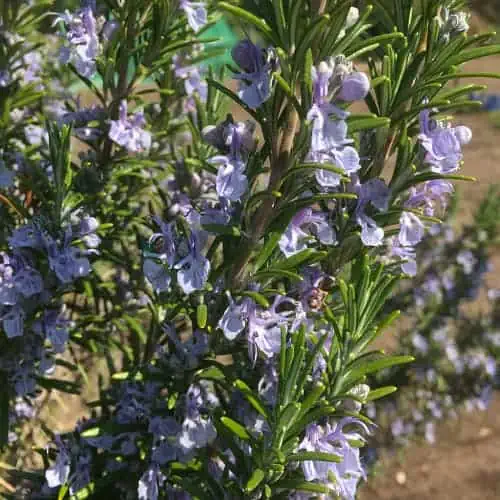
This herb gives some of our favorite dishes an amazing fragrance, and that’s exactly what drives so many pests away! While we find rosemary attractive, ticks find it pungent and tough. To effectively keep them away, you can even spread cut sprigs around the garden whenever guests are over for a summer party. If you begin to notice tick infestations, plant new cuttings in pots and allow them to become established in the affected areas.
Apart from keeping pests away, spring-summer rosemary blooms can bring attractive sprays of color. Depending on the cultivar, flowers can be blue, pink, or purple. They are nectar-rich and can attract beneficial, instead of harmful, insects. Gritty or sandy soil is best to encourage good growth and flowering each year. Large pots placed in a sunny spot will also improve the plant’s performance. Aromatherapy, summer interest, intense flavor, and pest-repellent properties – what more can you ask of a plant?
2) Common sage (Salvia officinalis)
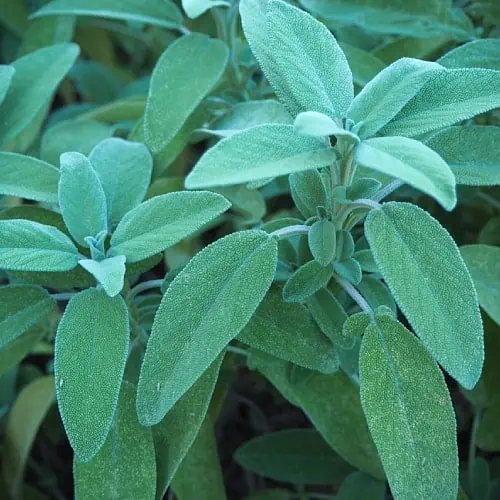
Much like rosemary, this Salvia species is also great at turning ticks away due to its overwhelming scent. The scent of crushed leaves can be strong enough to turn away dogs, cats, and even some people! The cultivation and use of this plant date back centuries as it was once culturally and religiously significant. Ancient Romans believed that it had healing properties and could ward off evil. It’s no mystery why as this humble herb is jam-packed with vitamins, minerals, antioxidants, and essential oils.
Sage is low-maintenance, easy to grow, and great fun to harvest. Its finely-haired leaves are soft to the touch and give it a muted green color. Spring or summer flowers of modern-day cultivars range in color from purple to cream to yellow. Hardy to USDA zones 5 – 9, this species prefers well-draining soil, sparse watering sessions, and a bright location. Patches would look great alongside other low-growing herbs and vegetables.
3) Daisy fleabane (Erigeron annuus)
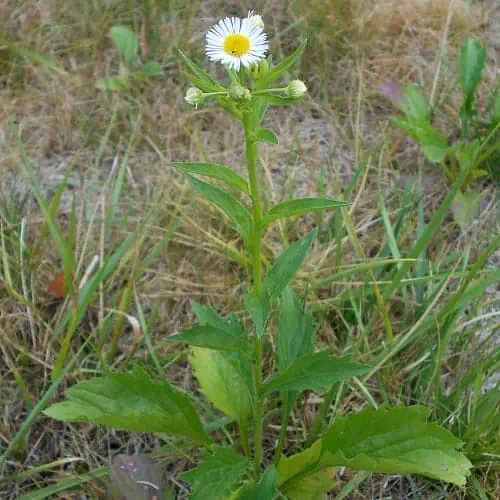
Who knew daisies could keep pests away too? This wildflower species is widely cultivated due to its attractive, yet small, blooms. It comes in many hybrids with varied petal colors. Early settlers in America would gather sprigs of this plant, dry them, and then carry them around in pockets or satchels to keep away pests. The dried sprigs could effectively repel ticks, fleas, and gnats. This is how the species got its common name!
Daisy fleabane is also known for attracting many pollinators and grazers as it is highly edible. The leaves, which are said to resemble the taste of spinach, can be cooked or consumed raw. They contain caffeic acid, an antioxidant compound that has benefits for the nervous system. To cultivate this species, plant it in gravel-rich, slightly alkaline soil. It should be placed in an area that receives full sun and little moisture as its roots favor dry conditions.
4) Beautyberry (Callicarpa spp.)
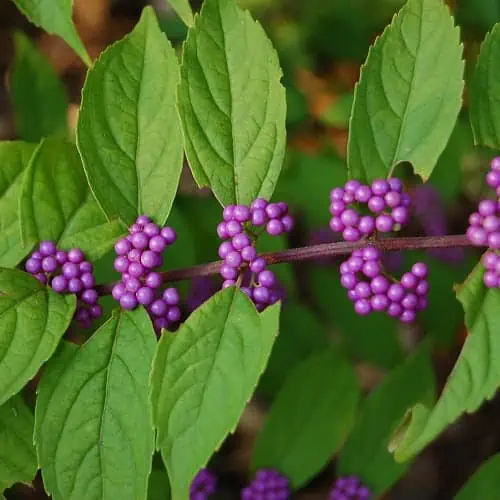
Beautyberries are stunning shrubs that produce distinctly purple to pink fruits. These have a metallic tinge, making them conspicuous in spite of their small size. Depending on their location, the shrubs can be deciduous or evergreen. Popular species include American beautyberry (C. americana), Bodinier’s beautyberry (C. bodinieri), and Japanese beautyberry (C. japonica). Moth larvae, birds, and other small animals thrive on the berries due to their winter availability, when other food sources are scarce.
Callicarpa contains chemicals that are effective against pests. These include spathulenol, borneol, callicarpenal, and intermedeol. Callicarpenal is known for being particularly unfavorable to deer ticks (Ixodes scapularis) and lone star ticks (Amblyomma americanum). The leaves of the plant also contain anti-cancer properties. Native Americans exploited beautyberries for their many uses. Even the roots were used to treat ailments from stomach aches to dizziness.
5) Garlic (Allium sativum)
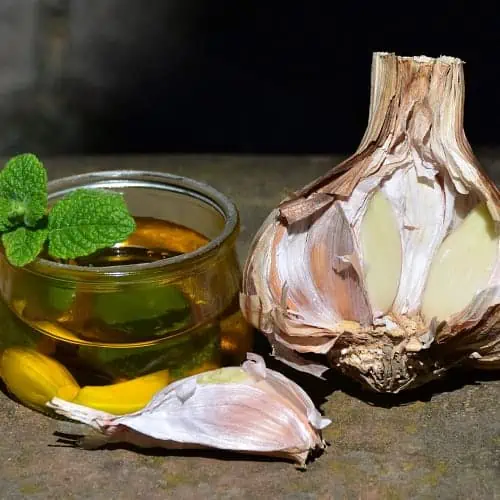
This bulbous vegetable, used for thousands of years as food and medicine, is chock-full of phytochemical properties. It is rich in sulfur-containing compounds that are emitted whenever its cells are damaged. The bulb’s juices have been used as an insecticide and nematicide in the UK for controlling fly and mite infestations in farms. Frequent consumption of garlic, which can alter the scent our bodies produce, is said to reduce the chances of tick bites!
In the ground, garlic may have a minimal effect on ticks as its scent and antiseptic compounds won’t waft freely in the garden. A clever way to take attack ticks organically and head-on is by creating a garlic-based insecticidal solution. A low concentration can be sprayed onto your lawn, but keep in mind that this must be done so sparingly as too much can burn the grass.
Growing garlic is incredibly simple. You’ll want patches to harvest as food, and not just to keep ticks away. An entire garlic plant can be grown from a single clove that has been broken off of the main bulb. In a few months, it can produce an entirely new bulb. The best time to plant garlic is when temperatures begin to drop in fall. Green shoots will eagerly sprout as soon as temperatures rise in spring.
6) Chrysanthemums (Chrysanthemum spp.)

Known for their large breathtaking blooms, chrysanthemum plants are a global favorite with remarkable ornamental value. Florists love to create displays of chrysanthemum bouquets to attract potential customers. The blooms are used to honor so many types of occasions. This is why the 4-syllable genus name has become so commonplace. Surprisingly, this decorative perennial can be used to repel ticks. It contains a compound called pyrethrum, which is capable of compromising the nervous systems of pests.
Pyrethrum, as an extract from crushed flowers, can be applied directly onto surfaces that are affected by ticks, lice, and mites. Since the 1950s, this was used in pesticides to protect crops, ornamentals, livestock, and pets. Some head lice products contain pyrethrin, which is the main active ingredient in pyrethrum. Rats and rabbits that are exposed to high amounts can present severe symptoms.
If your garden is often visited by an excess of pests each year, you should definitely do yourself a favor and plant a few chrysanthemum beds. As a bonus, they’ll keep your property colorful through fall!
7) Wormwood (Artemisia absinthium)

Absinthe and vermouth, well-known spirits, contain wormwood extracts. This staple ingredient in age-old potions contains thujone, a poisonous compound. Thujone works by stimulating neuronal connections and could potentially cause seizures in high concentrations. Wormwood clippings can therefore keep pests away by compromising their nervous systems. These are frequently used to repel ticks, mites, lice, and fleas in livestock farms.
Wormwood is an herbaceous perennial that produces grooved, silvery-green shoots and muted green leaves. When cultivated in fertile, dry soil, the plant is more likely to produce yellow flowers each summer. This species likes to be on its own and may become stunted when grown close to other plants. A sunny location is required for it to reach a maximum height of 4 feet (122 cm). When handling cuttings, make sure to wear gloves as a precaution against possible allergens.
8) Pennyroyal (Mentha pulegium)

Another herbal plant with effects on the nervous system, pennyroyal is a species under the mint family (Lamiaceae). It was often used in traditional folk remedies, but due to its potency and the lack of studies on its effects on human systems, it is now considered dangerous. Pennyroyal oil contains pulegone, which can heavily tax the liver and unfortunately lead to death. This toxic compound gives the plant its peppermint fragrance.
Also known as mosquito plant, pudding grass, stinking balm, or tickweed, pennyroyal is used for its acaricidal activity. Acaricides are substances that effectively kill mites and ticks. Crushed stems and leaves have historically been used as pest repellent. Caution is required, however, as the effects of oil absorption through the skin are not yet fully understood. Always use gloves when handling the plant and make sure to thoroughly wash your hands afterward.
9) English lavender (Lavandula angustifolia)
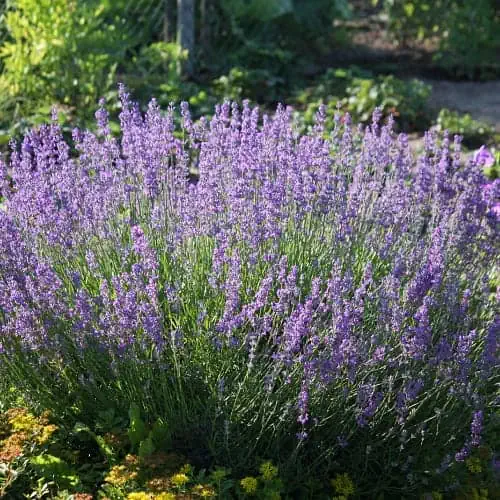
This species was previously known as Lavandula officinalis but was given the new epithet, ‘angustifolia’, in reference to its narrow leaves. Chiefly grown as an ornamental plant and as a source of essential oils, English lavender is an attractive evergreen herb. Fragrant enough to lull one to sleep, this modest plant can produce a profusion of attractive flowers on leafless stems. Hardy to USDA zone 5, it is tolerant of moderately low temperatures and can persist through dry summers.
As a drought-tolerant plant, English lavender dislikes consistently moist soil and can thrive under little to no maintenance. Cuttings can be planted in drier areas of the garden, as long as the soil is neutral or slightly alkaline. Ticks will surely avoid established lavender colonies as they are averse to the fragrance. Lavender oil can also be applied directly onto skin or pet hair as a deterrent to ticks. It will also prevent any existing eggs from hatching, making their populations die off quickly.
10) Common sunflower (Helianthus annuus)
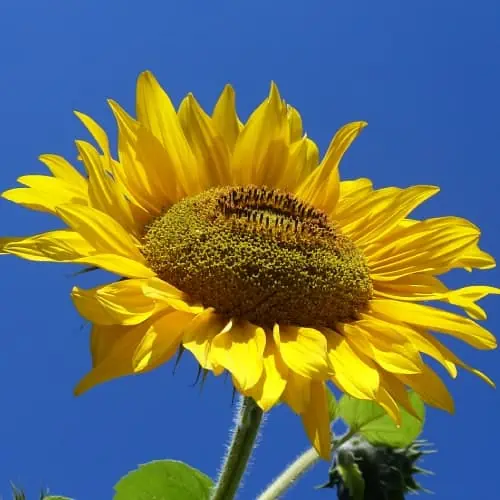
The glorious sunflower is, unsurprisingly, also quite effective as a pest repellent. This species is best known for its large flowers, edible fruits, and beneficial oils. Its wild and ornamental forms tend to differ, with wild plants bearing more flowerheads per shoot. Ornamental H. annuus is more likely to produce a single, large flower head on a tall and branchless stem. The orientation of its seeds is an example of mathematical perfection in nature, with the highest possible number of seeds packed into the flowerhead disk.
Sunflower seeds have rich oils that contain vitamin B1 (thiamine), which is said to repel ticks. Frequent consumption of the seeds or use of the oils can naturally deter them. Vitamin B1 supplements are said to have the same effect. Oral consumption helps prevent insect stings, as excess amounts are excreted through the skin as perspiration.
11) Catnip (Nepeta cataria)
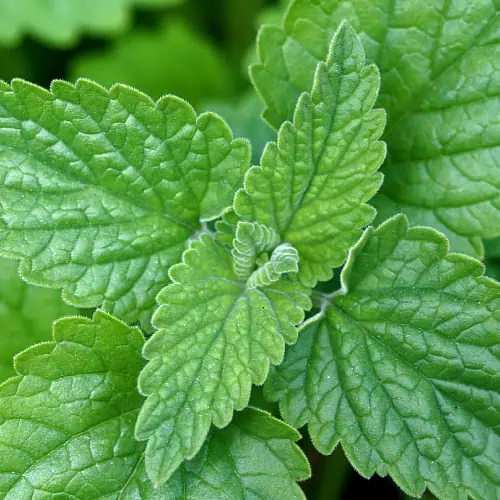
Known best as a plant that appeases curious cats, Nepeta cataria is an herbaceous perennial that also happens to be under the mint family. When its leaves are rubbed against each other or broken up, they release an active compound called nepetalactone. Cats can respond in a strange way once they smell nepetalactone because it activates brain regions that control behavior. As the cat breathes in more oil vapors, its behavioral response becomes more aggravated.
The intense smell of this plant deters, instead of attracts, ticks. Freshly cut springs can be placed around the garden or sprinkled directly onto areas with infestations. You can also save the leaves for later use by storing them in an airtight pouch and freezing them. Perhaps the nervous system of ticks also goes into overdrive whenever they smell catnip. The jury’s certainly out on this, but one thing’s for sure – you won’t find them hanging around this plant (or around cats that have rolled around in catnip).
12) Rose geranium (Pelargonium graveolens)
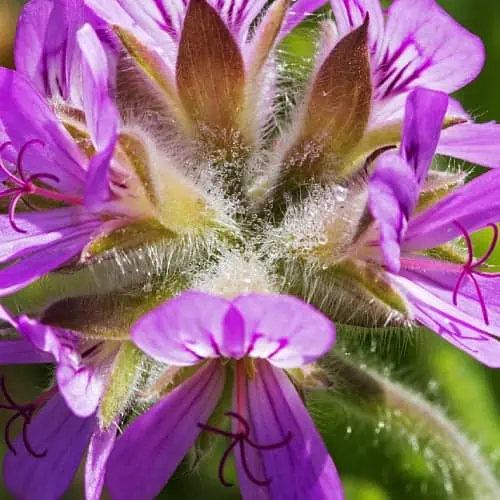
Also known as sweet-scented geranium and stork’s bill, Pelargonium graveolens is a perennial shrub with ornamental value. Its leaves are intricately lobed and contain the plant’s most valuable component – its essential oil. The oil is produced in glands at the base of leaf hairs and contains more than 80 compounds. Major components include citronellol, geraniol, linalool, and citronellyl formate. These make the oil an effective tick repellent with the potential to work just as well as DEET, a common ingredient in bug spray products.
Pelargonium plants have many cultivars with varied geranium oil compositions, causing them to have unique fragrances. P. graveolens is actually less rosy in scent compared to its close cousins (P. capitatum and P. radens), as its fragrance has more minty tones. What it lacks in terms of rosiness it certainly makes up for with its pale pink to white flowers, which appear during spring-fall of each year. Outside of USDA hardiness zones 10 – 11, however, this plant may have to be treated as an annual.


Great list of plants. They work as advertised, the essential oils derived from such plants are the primary component of all natural tick repellents, which we know quite a bit about.
Gardening can be a very relaxing and rewarding passtime, lean on the threat of tick-borne disease and find yourself and excuse to develop that green thumb you always wanted. It is a win – win.